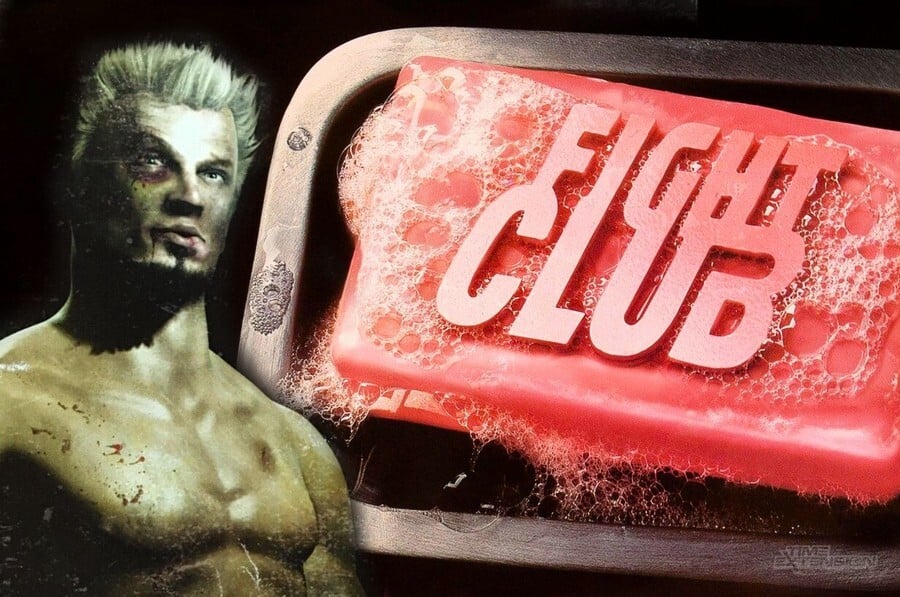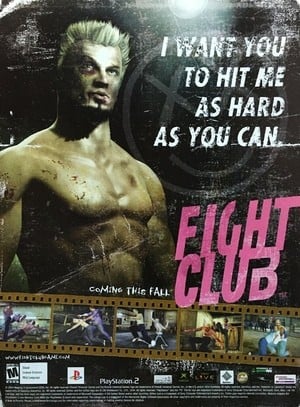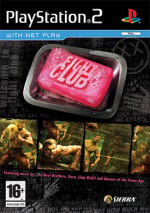
Released in 1999 and based on the 1996 novel of the same name, Fight Club is a landmark moment in countercultural American cinema. Critically misunderstood by many at the time of release and a disappointing commercial flop for its studio, 20th Century Fox, it has since gone on to become one of the most influential movies of the past few decades, and its themes of misplaced masculinity, nihilism, rampant consumerism, disenchantment with working life, rebellion against authority and—ultimately—mental health have, if anything, became even more important in the modern era.
It's not the kind of film which immediately lends itself to adaptation into a video game, yet that's precisely what happened in 2004, five years after David Fincher's film had flopped at the box office before building up a sizeable following on home media. It was perhaps the film's striking critical resurgence which convinced 20th Century Fox's game division, Fox Interactive, to explore the idea of turning it into a game; after all, both the Die Hard and Alien franchises had spawned successful video games in years previously.
"We were doing some consulting work for Fox Interactive, and they brought us the idea of making Fight Club," recalls lead programmer Steven Batiste, who teamed up with David Broadhurst to establish California-based Genuine Games in 2002. "I met David at Software Creations. He moved to the US in 1998, and I followed him in 1999. We both worked at Black Ops Entertainment until 2001 when I left to work at Insomniac Games on the engine for Ratchet & Clank. In 2002, we both decided to start a company in Woodland Hills, California, a suburb of Los Angeles and down the road from Neversoft."
Batiste was immediately sceptical of taking on the job. "It was a difficult decision to make because we knew of the cult following the film had," he tells Time Extension. "I knew of the book and watched the film when it came out. I later read the book and preferred it over the film. We realized the irony of making a game based on the content of the book, but the same irony existed for the film being made for mass consumerism, exploiting the book with A-list stars and glamour."
It was never going to be an easy task to convert a movie as nuanced as Fight Club into a mainstream video game, and predictably, the choice was made to focus the core gameplay on combat, a key element of both Fincher's film and Chuck Palahniuk's original novel. This ultimately led to a 3D fighter in the same vein as Tekken and Virtua Fighter, featuring various characters from the movie. In order to lend some much-needed authenticity to the project, the iconic 'soap' logo was featured, as were several pieces of music lifted directly from The Dust Brothers' timeless soundtrack; meanwhile, many of the arenas seen in the game are based directly on their movie counterparts.
In the 1999 movie, the level of violence is extreme, with characters getting their faces smashed into concrete floors and becoming visibly disfigured as a result. Batiste and the rest of the team at Genuine Games wanted to replicate this visceral impact and came up with one of the game's most impressive technical feats: a bone-breaking mechanic which, during gameplay, would cause the character's body to become transparent—like an X-ray—revealing their shattered skeleton underneath (a similar system was present in Sega's Giant Gram wrestling game on Dreamcast, and would famously reappear in the Mortal Kombat series).
"Technically, it was a challenge on PS2 and Xbox," reveals Batiste. "A lot of translucent triangles needed to be drawn in the days when translucency was very expensive. We also had to ensure the bones looked good on the skeleton rig of the animations, so a lot of upfront design went into this. I wrote a pretty advanced animation system that could apply different animations to different parts of the skeletal chain, kind of like overrides. It could even switch a character from right-handed to left-handed on the fly. These features are how the broken bones worked, along with the game engine being aware of the breaks for moves and AI." Even more striking is the use of this feature in the game's 'Hardcore' mode, where injuries sustained are carried over to the next fight. Should you break an arm and still somehow win, you'll be at a considerable disadvantage in the next round.
Fight Club's roster of combatants includes a new protagonist—who is also the central figure in its story mode—as well as fighters such as Angel Face, The Mechanic, Lou (of Lou's Tavern fame) and Raymond K. Hessel. As fans of the book and movie will attest, some of those characters aren't technically part of Fight Club or Project Mayhem in the original plot, so Batiste and his team had to take pretty significant liberties in order to include them and beef up the number of playable characters. Even the historical figure Abraham Lincoln, who is mentioned only in passing during the film, made the cut, becoming playable if you beat the Arcade mode with all characters. "He was going to be part of the story mode and really just a fun character to fight as."
While the late Meat Loaf was on board to reprise his role of Robert "Bob" Paulson—a character whose in-game model gleefully subverts the trend inspired by Dead or Alive by having huge, pendulous breasts which boast realistic physics—as were Holt McCallany (The Mechanic), Thom Gossom Jr. (Detective Stern) and Michael Shamus Wiles (the bartender)—there were serious plans to get the movie's lead stars involved as well.
"We originally had them all lined up for the game," explains Batiste. "But Fincher objected, and then Norton rallied behind him and refused, causing the rest then to also refuse. I guess it’s okay for him to exploit the book and not us." Fincher wasn't just against his actors appearing in the game—he didn't want it to exist at all. "He really didn’t like the idea of a game being made," continues Batiste, citing the general attitude towards video game adaptations amongst filmmakers. "Hollywood didn’t like games at the time; Matt Damon, for example, was asked to be in a Bourne game and refused, saying he didn't believe in violent games. But somehow, he believed the exact same thing in films was okay."
The end result was a call from higher-ups to change the character models of Pitt and Norton to make them look different—something that echoes Tom Cruise's refusal to have his image in the Misson Impossible video games. The lack of recognisable characters was exacerbated further by the fact that the voice actors brought in to replicate the two leads were too convincing. "The voice actors we had for Pitt and Norton ended up sounding too much like the real actors, so we had to make them sound completely different, causing more of a disconnect for fans," laments Batiste.
You can imagine why the inclusion of Limp Bizkit frontman Fred Durst as an unlockable fighter was such a contentious point for fans when the game eventually launched. Contrary to speculation, there was no stipulation on Durst's part that he had to appear in the game due to a Limp Bizkit track being used in it. "Fred was a fan of Fight Club and expressed interest in being in the game," Batiste reveals. "We got a call either from Interscope or his manager asking if he could be in it, so I said, 'If he shows up at this time without an entourage, he can'. He did and turned out to be a really nice, friendly guy. He chatted with pretty much everyone and was very humble. He asked to be in the game because he was a fan, and no demands were made."

When Fight Club eventually hit store shelves in 2004, it was eviscerated by critics. "To its credit, this fighter takes a new approach to being unoriginal and substandard," was Game Informer's withering verdict at the time of release. "The combat mechanic is generally passable, but the game fails to achieve the 'gritty' mark it was shooting for, instead hitting 'boring' head-on with dull character models, lifeless cutscenes, and a total lack of charm."
1UP.com's critique of the game is even more damning, with special venom being aimed at the attempt to deliver a gripping narrative akin to that of the book and movie. "Maybe not everyone can equal the outstanding work EA did in their Lord of the Rings games, but the amateurish stills used here wouldn't even make it into the comic books they try to mimic," says Garnett Lee. "To top it off, nondescript actors deliver the overlaying dialogue with all the enthusiasm of a group of guys reading the McDonald's menu after being told they had to eat something off of it."
Both reviews make a good point; Fight Club's story mode is hamstrung by terribly produced static cutscenes, all of which look cheap and nasty when compared to the fully animated CGI introduction sequence. Some critics have pointed out that the game, as a result, feels half-finished. "That's because it was half finished," replies Batiste when we put this to him. "During development, Vivendi bought Fox Interactive and started slashing all IP and budgets. We lost a lot of budget and development time for Fight Club, which is why we lost the proper cutscenes for story mode and ended up with rushed gameplay. The same thing happened with 50 Cent Bulletproof, which we were developing in parallel. Vivendi was great at ruining games."
The irony is that, in some respects, the Fight Club video game could have expanded some underbaked elements of the original movie. For example, in an interview conducted prior to the game's release, actor Thom Gossom Jr.—who plays Detective Stern—said he actually had more room to develop the character than he got in the movie, yet his role was reduced dramatically. "He did a great performance and unfortunately got cut because of the budget cuts and constraints," says Batiste.
Batiste has since moved out of the realm of video games and has shifted his attention to AI; he's currently working on "advanced AI simulating the real world for making forecasts on future events." Despite being branded one of the worst fighting games of all time, there are things about Fight Club which still make Batiste proud today.
"I think the artwork and engine are decent, and the game looks pretty good, with very interactive environments," he says. "We also had great character artists and animators. Mike Yosh and Rich Diamant went onto Naughty Dog." He's also not ready to completely disown the game and, if he had the chance, would love to revisit it. "I'd spend more time tuning the gameplay so all the cool moves get exposed more easily; the combo system was just way too hard to get anything good out of it. I’d also do a proper story mode, echoing the themes of the book, with quality game cinematics that blend right into the action."

